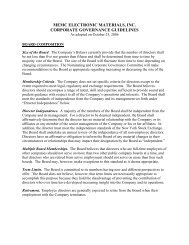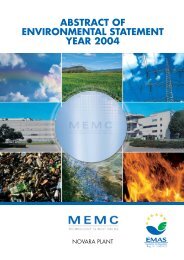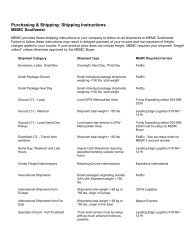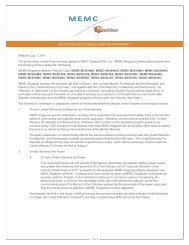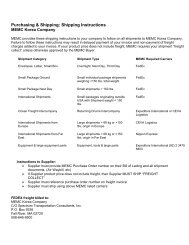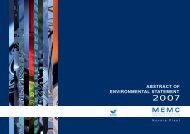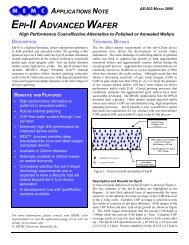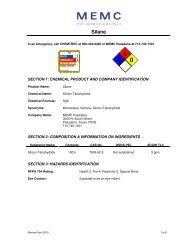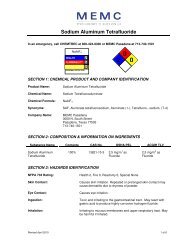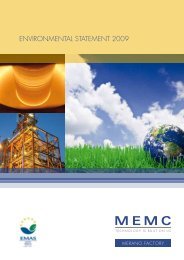BUILDING ON THE PAST, READY FOR THE FUTURE: - MEMC
BUILDING ON THE PAST, READY FOR THE FUTURE: - MEMC
BUILDING ON THE PAST, READY FOR THE FUTURE: - MEMC
Create successful ePaper yourself
Turn your PDF publications into a flip-book with our unique Google optimized e-Paper software.
In external gettering, a fine-grain layer of<br />
polysilicon is grown on the backside of the wafer to<br />
draw impurities away from the critical regions of<br />
the wafer where devices are built. Wafers with this<br />
backside EG layer yield better and are less sensitive<br />
to process upsets that might ordinarily degrade or<br />
destroy devices. Monsanto (<strong>MEMC</strong>) was the first<br />
wafer manufacturer to offer external gettering, a<br />
process developed under the lead of Dr. Dale Hill.<br />
By the late 1980s, almost 50 percent of all wafers<br />
made by Monsanto had the polysilicon gettering<br />
layer applied to them.<br />
Another external gettering process adopted by<br />
<strong>MEMC</strong> was called custom-designed gettering<br />
or CDG. Sandblasting of the wafer backside can<br />
create damage points at the back surface. These<br />
damage points would also effectively trap metallic<br />
impurities. By changing the sandblasting conditions<br />
A product brochure describing the benefits of<br />
granular polysilicon as produced at the <strong>MEMC</strong><br />
Pasadena plant.<br />
<strong>MEMC</strong> 300mm wafer.<br />
to control the density of damage points, a wide<br />
range of damage levels could be created in order to<br />
provide the correct gettering effect to optimize the<br />
customer’s device yields.<br />
<strong>MEMC</strong>’s process of internal gettering is featured in<br />
the November 2003 issue of Solid State Technology.<br />
Great Strides in Technology 41



